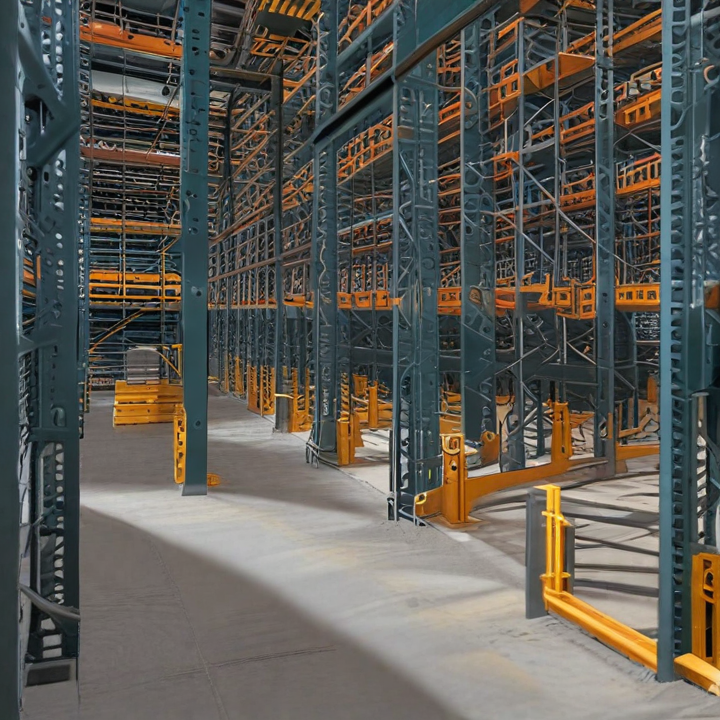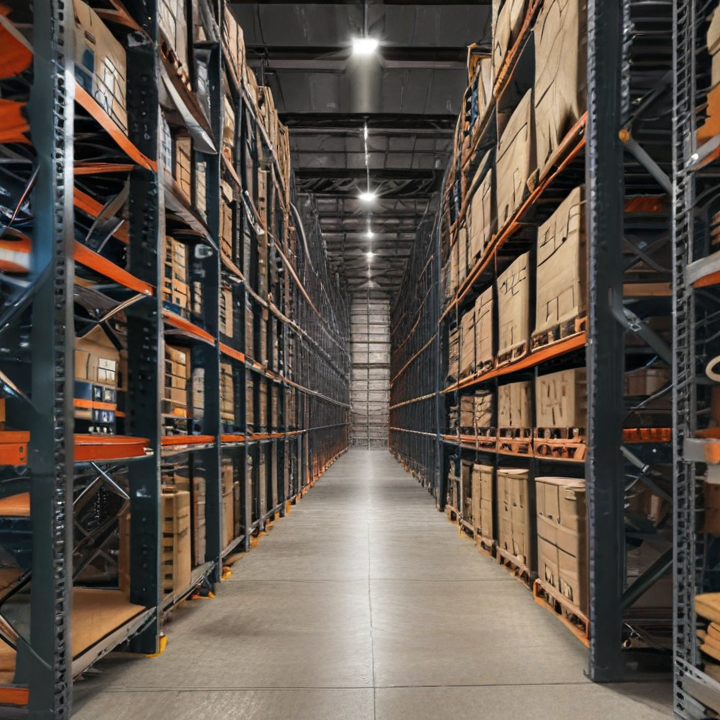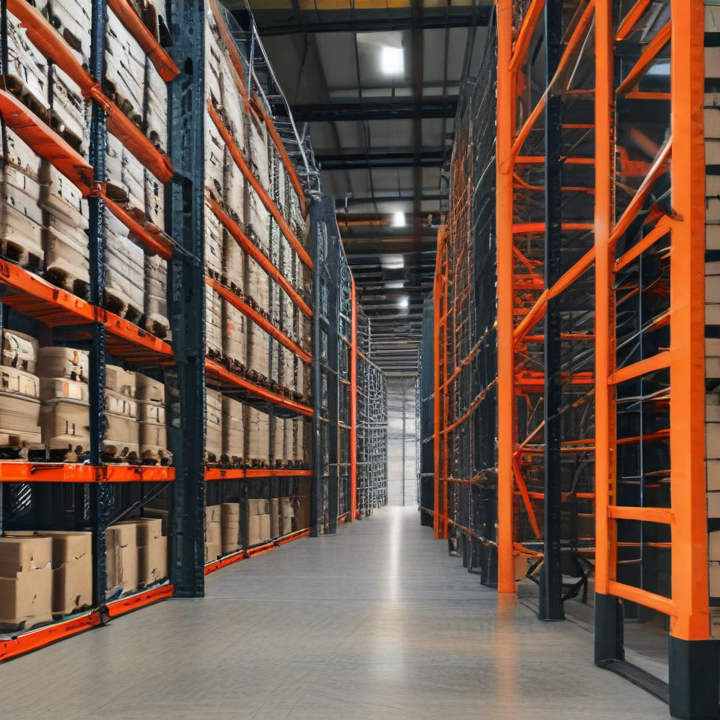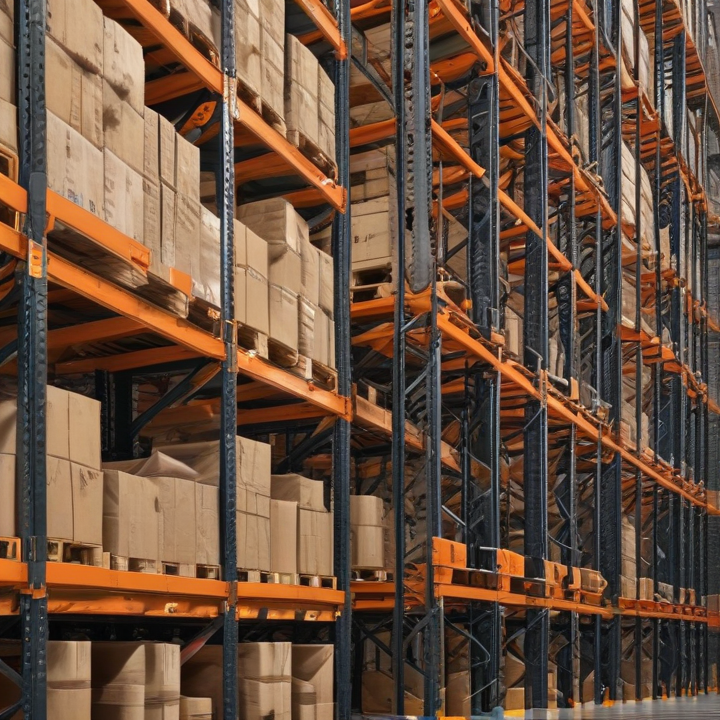drive in pallet racking Safety Certifications
Drive-in pallet racking systems are widely used in warehouses to maximize storage density, but their structural complexity necessitates stringent safety standards and certifications to ensure safe operation. Here are some critical safety certifications and guidelines associated with drive-in pallet racking systems:
1. ANSI/RMI MH16.1: The American National Standards Institute and the Rack Manufacturers Institute (RMI) set forth MH16.1, a standard for industrial steel storage racks. This certification ensures that the rack is designed, manufactured, and tested to withstand specific load capacities, seismic conditions, and other environmental factors.
2. SEMA (Storage Equipment Manufacturers Association): In the UK, SEMA guidelines ensure the design, installation, and maintenance of storage equipment, including drive-in racking systems. This certification emphasizes structural integrity and operator safety.
3. FEM (Federation Europeenne de la Manutention): The FEM provides European guidelines for the design and use of storage equipment. Complying with FEM 10.2.02 standards ensures that drive-in pallet racking systems are safe for use in European environments.
4. OSHA (Occupational Safety and Health Administration): While OSHA doesn’t certify racking systems, compliance with OSHA standards (such as 1910 Subpart N for materials handling and storage) is crucial for ensuring workplace safety in the U.S.
5. Load Application and Rack Configuration (LARC) Drawings: These documents, certified by a qualified engineer, provide detailed specifications on load capacities, dimensions, and configurations of the racking system. Ensuring LARC approval helps maintain the structural integrity and safety of the installation.
6. Regular Inspections and Maintenance: Certifications are only as good as the ongoing maintenance conducted. Regular inspections, adhering to the manufacturer’s guidelines and relevant standards, are essential for identifying potential issues before they escalate.
In summary, safety certifications such as ANSI/RMI MH16.1, SEMA, FEM, and adherence to OSHA standards are critical for ensuring the reliability and safety of drive-in pallet racking systems. Regular inspections and maintenance are equally important to uphold these standards over time.
List Reference Technical Parameters of “drive in pallet racking”
Drive-in pallet racking is a high-density storage solution commonly utilized in warehouses and distribution centers. Below are the key reference technical parameters for drive-in pallet racking:
1. Rack Dimensions:
– Frame Height: Typically ranges from 3 to 15 meters, but custom heights may be available.
– Bay Width: Commonly ranges from 1.7 to 3 meters, tailored to fit standard pallet sizes (e.g., 1,000mm x 1,200mm).
– Depth: The depth can vary depending on the requirement and space, usually from 2 to 10 pallet positions deep.
2. Load Capacity:
– Per Pallet Level: Usually between 500 kg to 1,500 kg per pallet position, depending on the design.
– Total Bay Capacity: This sum considers the height, width, and depth of the racking system and the load per pallet.
3. Material:
– Typically constructed from high-tensile steel, often coated for durability and corrosion resistance.
4. Pallet Configuration:
– Drive-in systems store pallets directly on the support rails, allowing multiple pallets to be stored in-depth, thereby maximizing space.
– Single-Entry: Accessible from one side, deeper systems may require forklifts to drive deeper into the rack.
– Double-Entry: Accessible from both sides, providing better access but requiring adequate aisle space at both ends.
5. Floor Space Utilization:
– Significant floor space savings as aisles between racks are eliminated.
– Best suited for large quantities of homogeneous products.
6. Forklift Type:
– Specifically designed for counterbalance or reach trucks equipped to maneuver within tight spaces.
7. Safety Features:
– Guide Rails: Aid forklift drivers, reducing the risk of damage.
– Safety Stops: Prevent pallets from being pushed too far, maintaining load security.
8. Operational Considerations:
– Ideal for LIFO (Last In, First Out) inventory system.
– Best for products with long shelf life and less frequent stock rotation.
These parameters are essential when designing and implementing a drive-in pallet racking system to ensure efficiency, safety, and optimal use of storage space.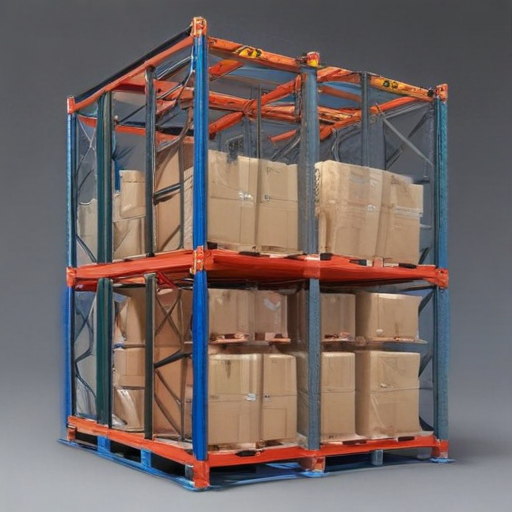
List Product features of “drive in pallet racking”
Drive-in pallet racking is an efficient storage solution widely used in warehouses and industrial settings where storage density and space utilization are critical. Here are the key product features:
1. High-Density Storage: Maximizes storage space by allowing pallets to be stored multiple rows deep, reducing the need for multiple aisles.
2. Space Utilization: Optimal for facilities with limited floor space, providing up to 70-80% more storage capacity compared to traditional racking systems.
3. LIFO and FIFO Capability: Primarily operates on a Last-In, First-Out (LIFO) basis, but can be adapted to a First-In, First-Out (FIFO) system with slight modifications.
4. Structural Integrity: Constructed from high-strength steel for durability and longevity, with secure anchoring to the floor for stability.
5. Adjustable Rails: Rails can be adjusted to accommodate different pallet sizes and varying load heights.
6. Ease of Access: Forklift trucks can drive directly into the rack structure to load or unload pallets, improving accessibility and reducing handling time.
7. Customizable Configurations: Can be tailored to fit specific warehouse layouts and operational needs, including variable depths and heights.
8. Cost-Effective: Reduces the need for additional warehouse space, thereby lowering real estate and operational costs.
9. Efficient Inventory Management: Ideal for storing large quantities of homogeneous products, simplifying inventory management and control.
10. Safety Features: Equipped with safety guards, rail guides, and entry barriers to protect both the racking system and the forklift operators.
11. Versatility: Suitable for a variety of industries, including cold storage, automotive, food and beverage, and more.
12. Reduced Aisle Space: Minimizes aisle space, creating more room for inventory storage and improving overall warehouse efficiency.
13. Quick Assembly and Installation: Components are designed for easy assembly, ensuring quick installation and minimal disruption to operations.
Drive-in pallet racking is an excellent solution for businesses seeking to maximize storage efficiency while maintaining accessibility and operational flexibility.
List Various Types of “drive in pallet racking”
Sure, here are various types of drive-in pallet racking systems:
1. Standard Drive-In Racking: This is the most basic form, where pallets are loaded and unloaded from the same entry point, generally creating a last-in, first-out (LIFO) system. It is highly efficient for storing large quantities of uniform products.
2. Drive-Through Racking: Unlike drive-in systems, drive-through racking allows access from both ends. This enables a first-in, first-out (FIFO) storage system, ideal for perishable goods or products with expiration dates.
3. Double Drive-In Racking: This system enhances the storage density by using double-deep configurations. It allows two pallets to be stored back-to-back, reducing the need for aisle space but still operates on a LIFO basis.
4. High-Density Drive-In Racking: Designed for extremely high-density storage needs, this type minimizes the need for multiple aisles and maximizes the warehouse floor space. It is suitable for a significant volume of similar items in a large-scale operation.
5. Drive-In Racking with Guided Rail Systems: This setup includes rail systems that guide forklifts accurately, ensuring safety and operational efficiency. It minimizes the risk of damage to the racking structure and stored pallets.
6. Automated Drive-In Racking: Integrating automation into drive-in racking involves using shuttle systems or robots for loading and unloading pallets. This automation improves speed, safety, and accuracy, particularly in high-volume operations.
7. Cold Storage Drive-In Racking: Tailored for refrigerated or frozen environments, this system focuses on maximizing storage within temperature-controlled areas, ensuring efficient use of expensive cold storage space while maintaining product integrity.
Each type of drive-in pallet racking has its specific use-case scenario, optimizing space and efficiency based on particular storage needs and warehouse layouts.
List Application of “drive in pallet racking”
Drive-in pallet racking is a high-density storage solution commonly used in various industries to maximize warehouse space utilization. Here are some key applications of drive-in pallet racking:
1. Cold Storage and Freezer Warehouses: The food and beverage industry often uses drive-in racking for cold storage and freezer environments. It allows efficient use of space, which is critical for maintaining specific temperature controls and minimizing energy costs.
2. Raw Material Storage: Manufacturing facilities store bulk quantities of raw materials on drive-in racking systems. This setup helps in organizing materials that are needed in large volumes and ensures quick access when production demands arise.
3. Bulk Chemical Storage: Chemical industries use drive-in pallet racking to store large quantities of chemical drums and containers. The system’s ability to store homogeneous products in a compact space helps in minimizing storage costs and maintaining safety protocols.
4. Retail and Wholesale: Retailers and wholesalers often utilize drive-in racking to store large quantities of seasonal or bulk items. This system helps manage inventory flow and optimize space in busy distribution centers.
5. Automotive Parts Storage: Auto parts manufacturers and distributors use drive-in pallet racking to store heavy and bulky items like tires, engines, and transmission parts. It supports efficient space usage and easy retrieval for large-scale inventory management.
6. Apparel and Textile Storage: Drive-in racking is used in the fashion industry to store large quantities of garments and textiles. Organized, high-density storage helps in managing seasonal inventory and quick turnaround times.
7. Building Materials Storage: Construction and building material suppliers use drive-in racking to store bulk items like cement bags, bricks, and lumber. These dense storage solutions help in maximizing space and ensuring easy access to materials.
8. Pharmaceutical Manufacturing: Pharmaceutical companies use drive-in racking to store bulk packaging materials and raw ingredients necessary for production. Efficient space utilization contributes to maintaining a streamlined inventory system.
By efficiently utilizing vertical space and offering a Last-In, First-Out (LIFO) inventory system, drive-in pallet racking is ideal for industries requiring high-density storage with less frequent product rotation.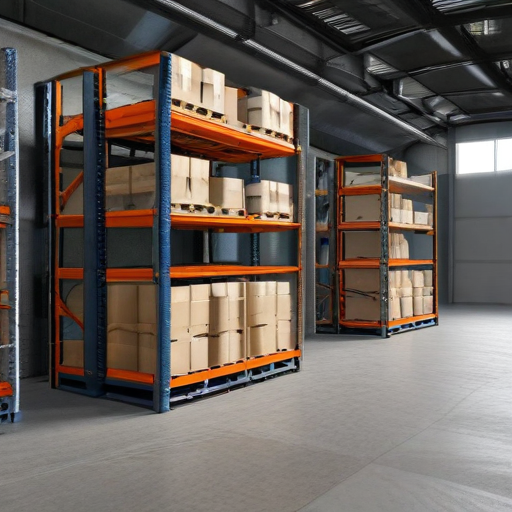
List Buyer Types of “drive in pallet racking”
Drive-in pallet racking is a high-density storage solution designed to maximize the use of available warehouse space by allowing forklifts to drive directly into the rack’s lanes. Here are common buyer types for drive-in pallet racking:
1. Cold Storage Facilities: These facilities often prioritize high-density storage for products like frozen food, where space utilization is critical.
2. Food and Beverage Industry: Companies with large inventories of perishable items need efficient storage solutions that allow for inventory rotation.
3. Beverage Distributors: Firms dealing with large volumes of bottles or cans appreciate the space efficiency and ease of access.
4. Manufacturing Firms: Manufacturers often need to store raw materials and finished goods in an organized manner to streamline production processes.
5. Retail Warehouses: Retailers with high turnover rates, who store large quantities of merchandise, find drive-in racking advantageous for space optimization.
6. Automotive Industry: Automotive companies require large storage areas for parts and assemblies, making high-density racking a viable solution.
7. 3PL (Third-Party Logistics) Providers: These logistics companies benefit from the ability to store varied client inventory efficiently.
8. Chemical and Pharmaceutical Companies: Firms in these sectors may need to store bulk quantities of products that can be palletized and stored effectively in high-density racks.
9. E-commerce Fulfillment Centers: With the growing demand for quick and efficient order fulfillment, these centers often employ various racking systems to manage diverse inventory types.
10. Seasonal Goods Suppliers: Businesses dealing with seasonal items, such as holiday decorations, benefit from the ability to densely store products during off-peak seasons.
Drive-in pallet racking is especially suitable for industries that handle large quantities of homogenous products and require efficient use of warehouse space.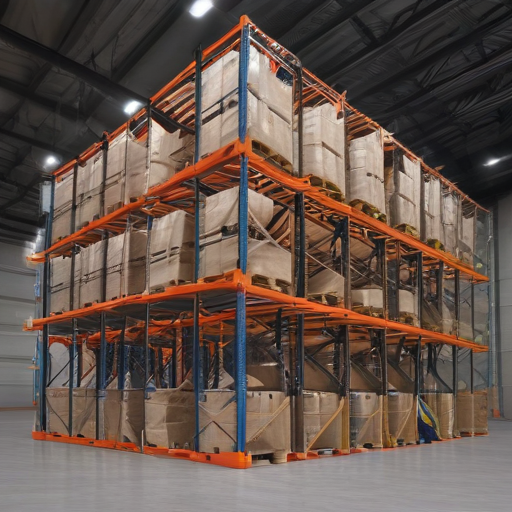
List “drive in pallet racking” Project Types for Different Industries
Drive-in pallet racking systems are highly efficient for maximizing storage capacity and are used across various industries. Here are some key project types by industry:
1. Food and Beverage
– Cold Storage Warehouses: Optimal for storing perishable goods like fruits, vegetables, dairy, and meats, preserving the products in temperature-controlled environments.
– Beverage Distribution: Efficient for storing large volumes of bottled or canned beverages, including water, soda, and alcoholic drinks.
2. Manufacturing
– Raw Materials Storage: Ideal for keeping bulk raw materials organized and accessible, essential for production lines.
– Finished Goods: Ensures that large quantities of finished products are stored compactly and can be easily retrieved for shipping or further processing.
3. Retail and E-commerce
– Seasonal Merchandise: Perfect for storing seasonal inventory, such as holiday decorations or winter wear, which requires high density for limited periods.
– Bulk Merchandise: Suitable for big-box retailers needing to store high volumes of products like furniture or large appliances.
4. Automotive
– Parts Storage: Efficiently stores automotive parts, including heavy and bulky items like tires, engines, and transmission systems, facilitating easy access and inventory management.
– Spare Parts Warehouses: Maintains a dense storage system for various car components, ensuring quick access for repair and service centers.
5. Pharmaceutical and Healthcare
– Medical Supplies: Optimal for bulk storage of medical devices, equipment, and supplies, ensuring these critical items are well-organized and readily available.
– Pharma Inventory: Facilitates high-density storage of pharmaceutical products, maximizing space in distribution centers.
6. Third-Party Logistics (3PL)
– Multi-user Warehousing: Supports diverse storage needs of various clients in a single facility, offering flexibility in managing different types of goods.
– Cross-docking Operations: Enhances efficiency in handling large volumes of incoming and outgoing shipments with minimal handling times.
7. Agriculture
– Bulk Grain Storage: Provides a compact solution for storing large quantities of grain, feed, or other agricultural products.
– Farm Equipment Parts: Stores heavy and oversized components used in farming machinery, ensuring order and accessibility.
Drive-in pallet racking is a versatile solution that increases efficiency and storage capacity, benefiting industries with bulk storage requirements.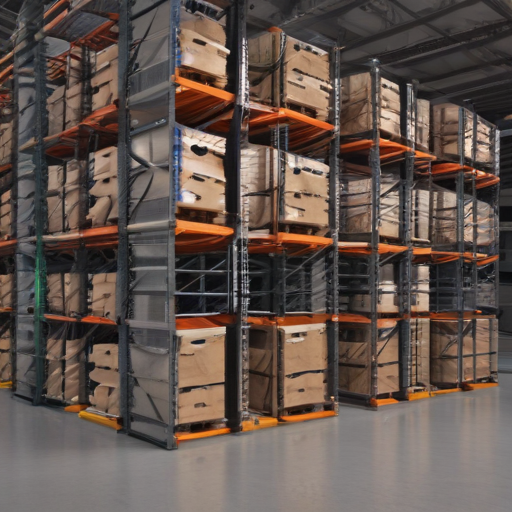
drive in pallet racking Accessories Upgrades and Custom Manufacturing Options
Drive-in pallet racking systems are essential for high-density storage, but their efficiency can be significantly enhanced with various accessories and custom manufacturing options. Here are some key upgrades:
1. Guide Rails: These are essential for guiding forklifts into the appropriate lanes, reducing the risk of accidents and ensuring the safety of both operators and goods.
2. Column Protectors: Reinforce the integrity of your racking system with column protectors, which shield the structure from impact damage, prolonging its lifespan.
3. Pallet Supports: Use pallet support bars to provide additional stability for pallets, preventing them from dislodging and reducing the risk of accidents.
4. Load Stops: Backstops or load stops prevent pallets from being pushed too far back, ensuring alignment and maximizing storage efficiency.
5. Decking Options: Wire mesh, solid steel, or perforated decking can be added to accommodate different types of goods, enhancing load versatility and preventing smaller items from falling through.
6. Safety Barriers: Install safety barriers to protect pedestrian walkways and work areas, ensuring compliance with safety regulations and minimizing risk.
7. Shims and Anchors: Adjust shims and floor anchors to level the racking system on uneven surfaces, enhancing overall stability and safety.
Custom Manufacturing Options:
1. Tailored Sizes: Custom-fit your drive-in racking system to your unique space constraints and storage needs, optimizing warehouse layout.
2. Material Choices: Opt for galvanized or powder-coated finishes for enhanced durability and corrosion resistance, suitable for various environments.
3. Advanced Engineering: Incorporate features such as seismic reinforcement or automated systems for high-risk or specialized applications.
4. Color Coding: Custom color coding can help in easy identification and organization of different storage zones or item categories.
Personalizing your drive-in pallet racking with these accessories and custom options maximizes both safety and efficiency, ensuring a robust and adapted storage solution.
List Quality Control and The Manufacturing Process of “drive in pallet racking”
Quality Control in Drive-In Pallet Racking
1. Material Selection: High-quality steel is chosen for manufacturing. Tests for tensile strength, yield strength, and chemical composition are conducted.
2. Supplier Audits: Periodic audits of raw material suppliers ensure consistency and adherence to standards.
3. Dimensional Accuracy: Components are inspected using precision instruments to confirm they meet design specifications.
4. Welding Quality: Welds undergo visual inspections and non-destructive testing (NDT) like ultrasonic testing to detect faults.
5. Coating and Finish: The powder coating or galvanizing is checked for uniformity, adhesion, and corrosion resistance.
6. Load Testing: Assembled units are tested to exceed their maximum load capacity to ensure durability.
7. Documentation: Comprehensive records of all quality checks are maintained for traceability.
8. Final Inspection: A thorough check of the final product ensures it meets all safety and quality standards before shipment.
Manufacturing Process of Drive-In Pallet Racking
1. Design and Engineering: CAD software is used to create detailed designs. Structural analysis ensures the racking system can handle specified loads.
2. Cutting: Steel is cut to precise lengths using laser cutters or automated saws.
3. Punching and Forming: Holes and slots are punched into steel components, which are then formed into desired shapes using press brakes or roll forming machines.
4. Welding: Components are welded together using robotic or manual welding processes. Consistent and high-quality welds are critical for structural integrity.
5. Surface Preparation: Steel parts are cleaned (degreased, pickled) before coating to ensure good adhesion and corrosion resistance.
6. Coating: Parts are powder coated or galvanized for protection against rust and environmental wear.
7. Assembly: Components are assembled into modules. Bolts and brackets are secured as per design specifications.
8. Inspection: Subassemblies and final assemblies undergo rigorous quality checks.
9. Packaging and Shipping: Finished products are carefully packaged to prevent damage during transportation and then shipped to customers.
By adhering to strict quality control measures and a precise manufacturing process, drive-in pallet racking systems are produced to be durable, reliable, and safe.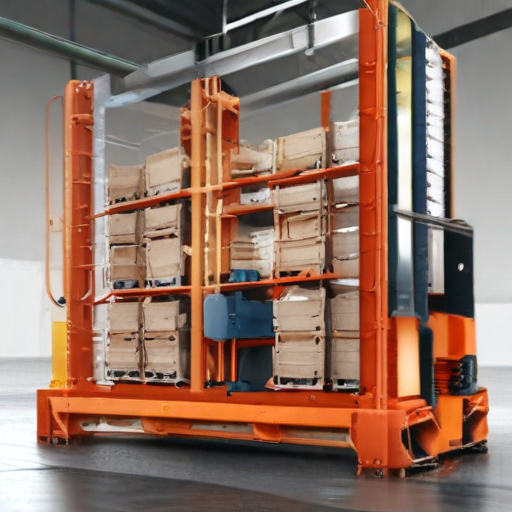
How to use “drive in pallet racking”
Drive-in pallet racking is a high-density storage system designed to maximize warehouse space by minimizing aisles and allowing forklifts to drive into the storage lanes. Here’s a step-by-step guide on how to use it:
Step-by-Step Guide
1. Preparation:
– Ensure that your forklifts are compatible with drive-in racking systems.
– Train operators on the specific requirements and safety protocols for using this racking system.
2. Loading the Rack:
– Start loading from the back of the drive-in lane moving towards the front.
– Lift the pallet to the desired height and carefully drive into the racking lane.
– Position the pallet so that it rests securely on the horizontal support beams.
– Lower the pallet slowly and back out carefully after placement.
3. Stacking:
– Follow the Last-In, First-Out (LIFO) method since the last pallet placed will be the first one accessed.
– Place the next pallets in sequential order moving from back to front, ensuring each pallet is securely positioned.
4. Unloading the Rack:
– Start unloading from the front, moving towards the back. Always remove the front pallet first.
– Lift the front pallet carefully with the forklift and back out slowly.
– Continue unloading sequentially until the lane is empty.
5. Safety Precautions:
– Regularly inspect the racking for any signs of wear or damage.
– Ensure pallets are properly aligned and not overhanging.
– Never exceed the recommended load capacity for both the rack and the forklift.
Tips
– Label lanes to avoid confusion and to ensure systematic loading and unloading.
– Use standardized pallets to avoid discrepancies in fitting.
Drive-in pallet racking is ideal for large volumes of homogeneous products and helps maximize storage efficiency by reducing the number of aisles. Proper training and adherence to safety practices will ensure smooth and safe operation.
“drive in pallet racking” Comparative Analysis
Drive-in pallet racking is a highly efficient storage system designed to maximize warehouse space. By allowing forklifts to enter the racking structure, it eliminates the need for multiple access aisles, optimizing floor space usage. Here’s a comparative analysis:
Advantages:
1. Space Efficiency: Drive-in racking can increase storage density by 60-80% compared to traditional selective pallet racking by utilizing horizontal and vertical space more effectively.
2. Cost-Effective: Initial setup costs are generally lower because fewer aisles are required, reducing the overall footprint and construction expenses.
3. High-Density Storage: Ideal for storing large quantities of homogenous products, making it perfect for industries like cold storage, food and beverage, and manufacturing.
Disadvantages:
1. Limited Selectivity: Access to pallets is restricted as it follows a Last-In, First-Out (LIFO) inventory system, making it unsuitable for products with high turnover or those requiring strict inventory rotation.
2. Increased Handling Time: Forklifts need to navigate deep racks, which can slow down retrieval times and increase labor costs.
3. Potential for Damage: The confined structure increases the likelihood of pallet and structural damage due to forklift collisions.
Comparative Dimension:
Selective Pallet Racking:
– Usage: Diverse inventory, high turnover, direct access to each pallet.
– Space Utilization: Moderate, requiring multiple aisles.
– System Cost: Higher due to more extensive aisle creation.
Push-Back Racking:
– Usage: Medium turnover, fewer SKUs.
– Space Utilization: Higher than selective but lower than drive-in.
– System Cost: Moderate, involves complex mechanisms.
Double-Deep Racking:
– Usage: Better space utilization for similar SKUs.
– Space Utilization: Improved but not as dense as drive-in.
– System Cost: Relatively high due to specialized forklifts.
In summary, drive-in pallet racking is a highly space-efficient and cost-effective solution for specific inventory types, but its limitations in selectivity and handling efficiency make it less versatile than other racking systems like selective or push-back racking. Choosing the right system depends on your specific operational needs and inventory characteristics.
“drive in pallet racking” Warranty and Support
When considering drive-in pallet racking systems, it’s crucial to evaluate the warranty and support options provided by the manufacturer or supplier to ensure long-term reliability and efficient operation.
Warranty:
Most reputable manufacturers offer a warranty period that typically spans between one to five years, covering materials and workmanship. The warranty generally ensures that any defects or failures in the racking system due to manufacturing faults are addressed promptly. It may include replacements or repairs of damaged components like beams, frames, and connectors. It is important to thoroughly review the warranty terms, including conditions and exclusions, to understand the extent of the coverage. Some elements not usually covered include damage caused by improper use, overloading, or modifications not authorized by the manufacturer.
Support:
Comprehensive support services are vital for the optimal functioning and maintenance of drive-in pallet racking systems. Reputable suppliers often provide:
1. Consultation and Design: Assistance in designing a racking system tailored to your storage needs.
2. Installation: Professional installation services to ensure that the racking system is set up safely and efficiently.
3. Inspection and Maintenance: Periodic inspections and maintenance services to identify and rectify issues before they escalate. This helps in extending the longevity of the racking system.
4. Technical Support: Access to expert technical support for troubleshooting any operational issues.
5. Training: Training services for your staff on the proper use and upkeep of the racking system to minimize the risk of accidents and damage.
By ensuring robust warranty and support services, you safeguard your investment in the drive-in pallet racking system, ensuring it remains functional, safe, and efficient for an extended period. Always verify these aspects with your supplier to avoid future inconveniences.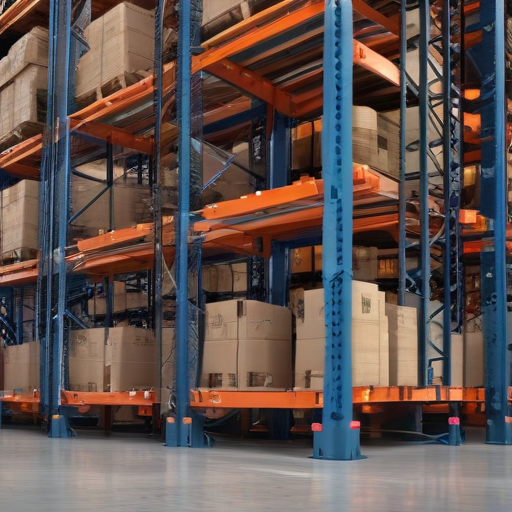
List “drive in pallet racking” FAQ
Sure, here’s a concise list of frequently asked questions (FAQ) about drive-in pallet racking systems:
1. What is Drive-In Pallet Racking?
– Drive-in pallet racking is a high-density storage system where pallets are stored on rails that run the depth of the racking. Forklifts drive into the racking structure to deposit and retrieve pallets.
2. What are the Benefits?
– Maximizes storage space utilization
– Ideal for large quantities of homogeneous products
– Cost-effective storage solution
3. What Types of Products are Best Suited?
– Non-perishable goods
– Products with a longer shelf life
– Items that are distributed in large, uniform batches
4. What are the Loading Methods?
– Last-In, First-Out (LIFO): The last pallet placed into the system is the first one out
– Best for non-perishable goods
5. What are the Aisle Requirements?
– Narrow aisles, as forklifts drive into the racks to place and retrieve pallets
6. Is it Compatible with All Forklifts?
– Generally, standard forklifts can be used but must be able to navigate within narrow lanes and handle the load requirements.
7. How is it Different from Drive-Through Racking?
– Drive-in racking has only one entry and exit point per bay, while drive-through racking allows access from both sides.
8. What are the Height Restrictions?
– Limited by ceiling height and the reach of the forklifts in use.
9. Can it be Customized?
– Yes, drive-in racking can be tailored to fit specific warehouse dimensions and pallet sizes.
10. Is Safety an Issue?
– Proper training for forklift operators and regular maintenance are essential to prevent accidents and ensure system integrity.
11. What Maintenance is Required?
– Regular inspections and timely repairs to ensure structural integrity and safety.
12. What Industries Use Drive-In Racking?
– Food and beverage, cold storage, wholesale, manufacturing.
13. What is the Installation Time?
– Depending on complexity, it can range from a few days to several weeks.
This concise list should cover the essential inquiries about drive-in pallet racking systems.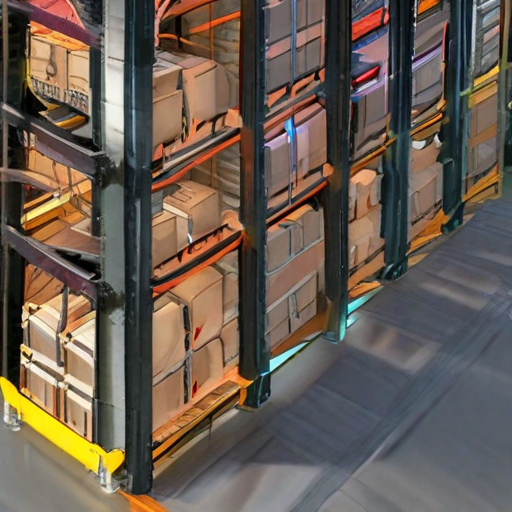
Top 10 FAQ with answer about drive in pallet racking for Buyer Sourcing from China
Top 10 FAQ About Drive-in Pallet Racking for Buyer Sourcing from China
1. What is Drive-In Pallet Racking?
Drive-in pallet racking is a high-density storage solution designed for storing large quantities of similar items using fewer aisles to maximize warehouse space.
2. What are the Benefits of Drive-In Pallet Racking?
It offers higher storage density, optimizes floor space, and is suitable for products with a longer shelf life and lower stock rotation.
3. What Materials are Used in Chinese Drive-In Racking Systems?
Typically, high-quality steel like Q235 or Q345 is used, ensuring durability and strength.
4. How to Assess the Quality of Chinese Manufacturers?
Evaluate certifications (ISO, CE), request samples, review client testimonials, and possibly arrange factory audits.
5. What is the Load Capacity?
Load capacities vary, but standard systems can handle 1,000 to 4,000 kg per pallet, depending on design and material.
6. Can Chinese Suppliers Customize Racking Systems?
Yes, most suppliers offer customization based on specific storage needs, including dimensions, load capacity, and environmental conditions.
7. What is the Lead Time for Manufacturing?
Lead times typically range from 3 to 6 weeks, but it can vary based on order quantity and customization requirements.
8. Are There any International Standards Compliance?
Reputable Chinese manufacturers comply with international standards like ISO 9001 and RMI/ANSI to ensure quality and safety.
9. What are the Payment Terms?
Common terms include 30% advance payment and 70% balance before shipment or against the copy of B/L (Bill of Lading).
10. How is Shipping Handled?
Shipping can be managed through FOB (Free On Board), CIF (Cost, Insurance, and Freight), or DDP (Delivered Duty Paid) terms, depending on the agreement with the supplier.
For detailed understanding and specific queries, direct communication with potential suppliers is recommended.

